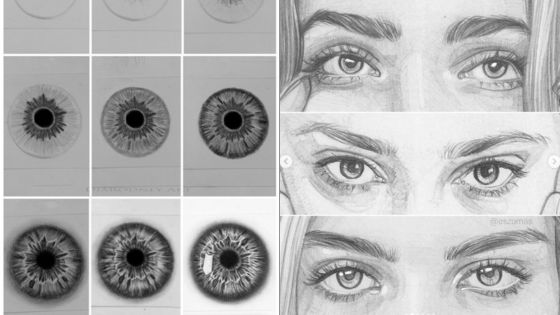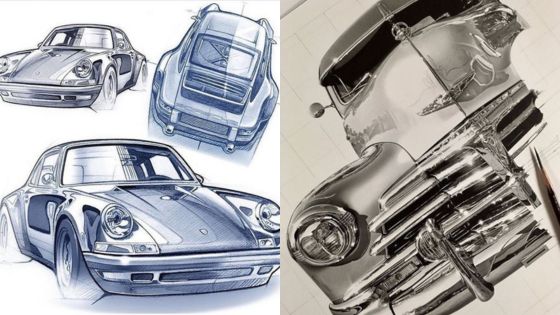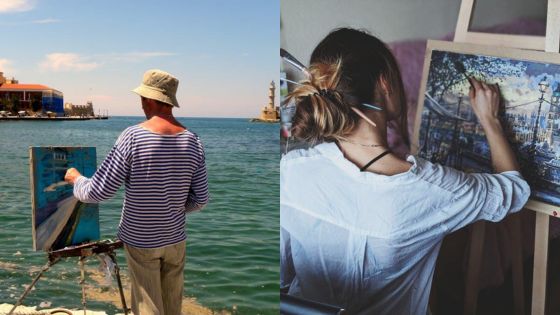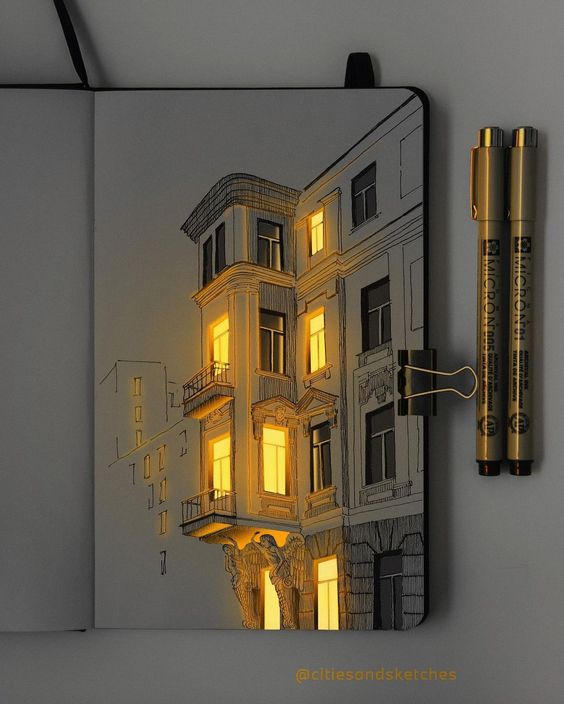
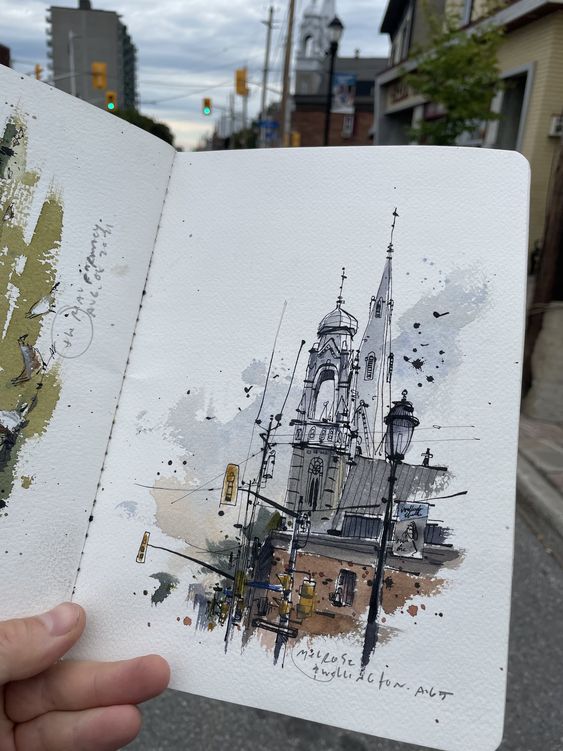
Urban sketching brings cities to life on paper. Artists capture the buzz of streets, buildings, and people in quick drawings. This fun hobby lets anyone turn everyday scenes into art.
Sketchers use pens, pencils, or watercolors to draw what they see around them. They might sit in a park or stand on a busy corner. The goal is to catch the feeling of a place in the moment.
Urban sketching helps people slow down and notice details they might miss. It’s a great way to explore new places or see familiar spots with fresh eyes. Sketchers often meet up to draw together and share their work.
Key Takeaways
- Urban sketching captures city life through on-location drawings
- Artists use various tools to quickly sketch scenes around them
- Group meetups let sketchers share tips and build community
The Essentials of Urban Sketching
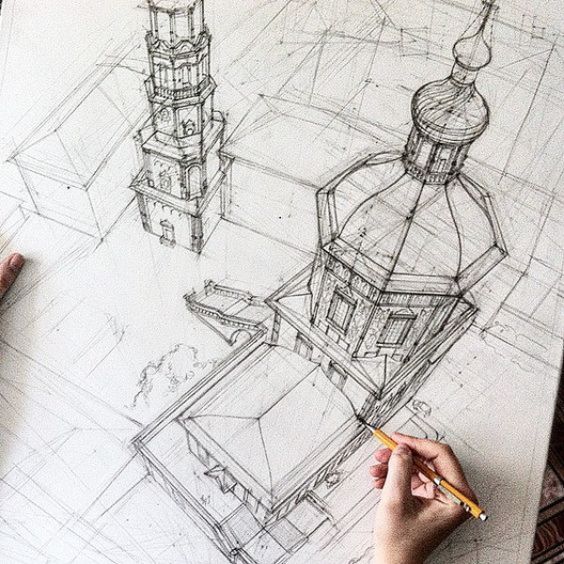
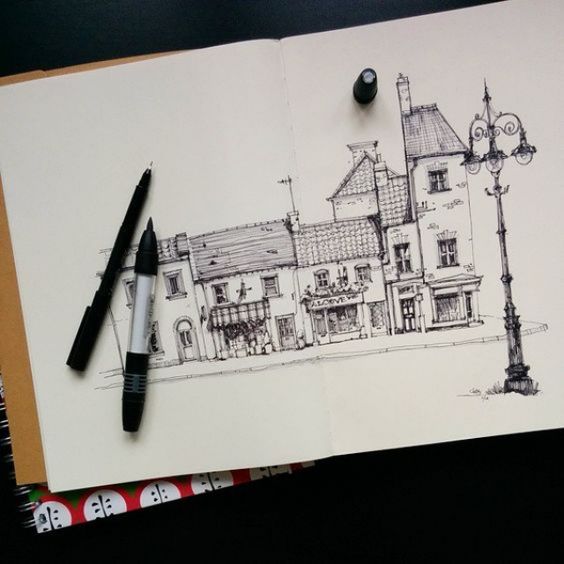
Urban sketching brings cities to life on paper. It captures the energy and spirit of a place through quick, on-location drawings. Let’s explore the key elements that make this art form so exciting!
Historical Beginnings
Urban sketching started in 2007 when Gabriel Campanario created a Flickr group. He wanted to showcase location drawings by artists worldwide. The idea caught on fast! In 2008, Campanario launched the Urban Sketchers blog. It featured sketches from different cities every day.
The movement grew quickly. Artists loved sharing their city views. By 2009, Urban Sketchers became a non-profit group. They held their first symposium in Portland, Oregon. Today, there are hundreds of Urban Sketchers groups around the globe.
Urban sketching has roots in older traditions too. Artists have been drawing cities for centuries. But this modern take makes it accessible to everyone!
Defining Urban Sketching
Urban sketching is all about drawing on location. Artists capture what they see in real-time. They sketch buildings, streets, and people. The goal is to show the world, one drawing at a time.
Urban sketchers use any tools they like. Some prefer pencils, while others love ink. Many add splashes of watercolor. The key is to work quickly and capture the moment.
These sketches tell stories. They show how cities look and feel. Urban sketchers often add notes to their drawings. This helps capture memories and details.
Urban sketching is fun and social. Many artists meet up to sketch together. They share tips and enjoy exploring their cities.
The Tools of the Craft
Urban sketchers love their tools! A sketchbook is a must-have. Small ones fit easily in a bag. Larger ones allow for bigger drawings. Many artists use waterproof paper for mixed media.
Pens are popular for urban sketching. Fineliners create crisp, clean lines. Fountain pens offer a classic feel. Some sketchers prefer ballpoint pens for their smooth flow.
- Pencils: Great for light sketches and shading
- Markers: Bold colors and quick coverage
- Watercolors: Perfect for adding a splash of color
Don’t forget about portable stools or standing easels. These help artists work comfortably outdoors. A small bag keeps all the supplies organized and easy to carry.
Understanding Perspective and Proportions
Perspective brings life to urban sketches. It creates depth and makes scenes feel real. One-point perspective works well for straight streets. Two-point perspective is great for building corners.
Proportions matter too. They help keep buildings and objects looking right. Artists often use their pencils to measure. They compare sizes of different parts of the scene.
Here’s a quick tip: Look for vertical and horizontal lines. Use them as guides. This helps keep everything in the right place. Windows, doors, and street lamps can be great reference points.
Practice is key for mastering perspective and proportions. Many urban sketchers start with simple shapes. They build up to more complex scenes over time. The more you sketch, the better you’ll get!
Cultivating Your Skills
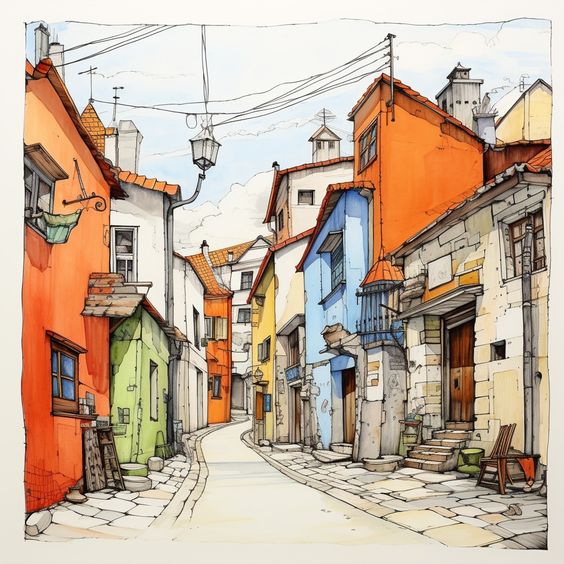
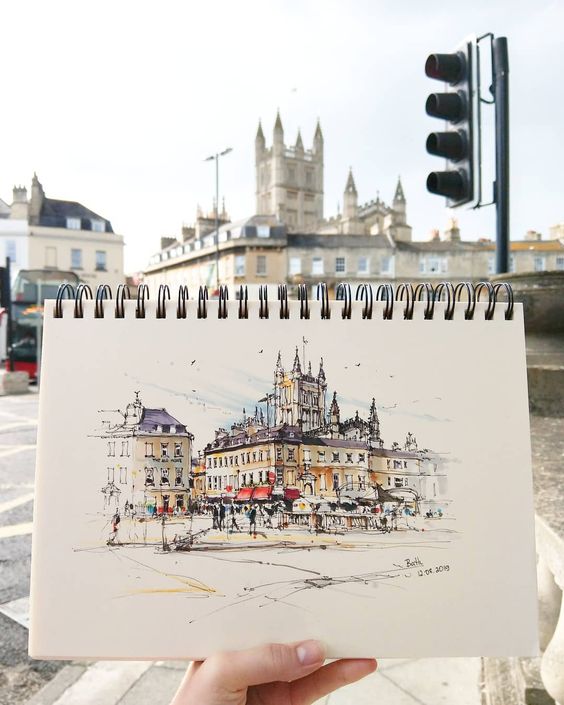
Urban sketching is a thrilling way to capture the world around you! With practice and dedication, anyone can develop their artistic abilities and create amazing sketches of city life.
Mastering On-location Drawing
Sketching on location is exciting! Artists can start by finding a comfy spot to sit or stand. They should bring a portable sketchbook and some drawing tools. It’s fun to observe the surroundings and pick an interesting subject. Sketchers can begin with quick, loose lines to capture the basic shapes. They shouldn’t worry about perfection – the goal is to catch the essence of the scene.
As they gain confidence, artists can add more details. They might include people, cars, or trees to bring their sketches to life. Regular practice helps improve observation skills and hand-eye coordination. Sketchers can try different viewpoints to make their drawings more dynamic.
Techniques for Capturing Architecture
Drawing buildings is a blast! Sketchers can start by looking at the overall shape of a structure. They should pay attention to the main lines and angles. It’s helpful to use a pencil to lightly mark the basic form before adding details.
Artists can focus on interesting architectural features like windows, doors, or decorative elements. They might use rulers or other straight edges to keep lines crisp and accurate. Perspective is key in architectural sketching. Sketchers can practice drawing vanishing points to create depth in their work.
Texture is another fun aspect to explore. Artists can use different line weights or shading techniques to show materials like brick, stone, or glass. This adds richness to their sketches and brings buildings to life on paper.
Playing with Light and Shadow
Light and shadow make sketches pop! Artists can start by noticing where the light source is coming from. This helps them understand where to place shadows in their drawings. They can use lighter lines or leave areas blank for highlights.
Shading is a fun way to add depth. Sketchers might use cross-hatching or stippling to create darker areas. They can vary the pressure on their pencil or pen to get different tones. It’s exciting to see how shadows change throughout the day.
Artists can play with contrast to make their sketches more dramatic. They might darken some areas while leaving others light. This creates a sense of atmosphere and mood in their urban scenes.
Developing Speed: The Quick Sketch Course
Quick sketching is thrilling! Artists can set a timer for 5-10 minutes and try to capture a scene quickly. They should focus on the main shapes and forms without getting caught up in details. It’s okay if the results are messy – the goal is to improve speed and confidence.
Gesture drawing is a great way to practice quick sketches. Artists can try to capture the movement of people or animals in just a few lines. They might use continuous line drawing, where they don’t lift their pen from the paper.
Regular practice is key to improving speed. Sketchers can carry a small notebook and draw whenever they have a spare moment. They’ll be amazed at how much they improve over time!
Exploring Watercolours and Markers
Adding color to sketches is super fun! Watercolors are a popular choice for urban sketchers. Artists can start with a small travel set of paints and a water brush. They might begin by adding light washes of color to their pencil or ink sketches.
Markers are another exciting option. They come in many colors and tip sizes. Sketchers can use them to add bold lines or fill in large areas quickly. Alcohol-based markers blend beautifully, creating smooth color transitions.
Artists can experiment with mixing media. They might combine watercolors with colored pencils or add marker details over watercolor washes. The possibilities are endless! With practice, sketchers will develop their own unique style and color palette.
Building a Sketching Community
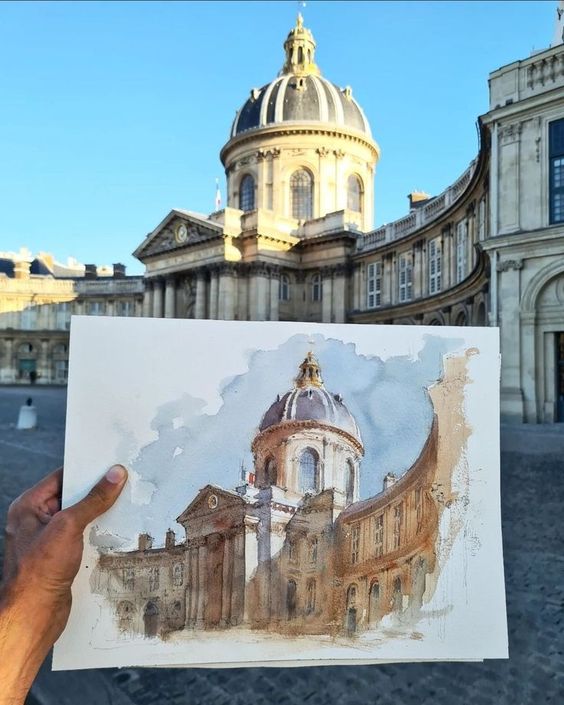
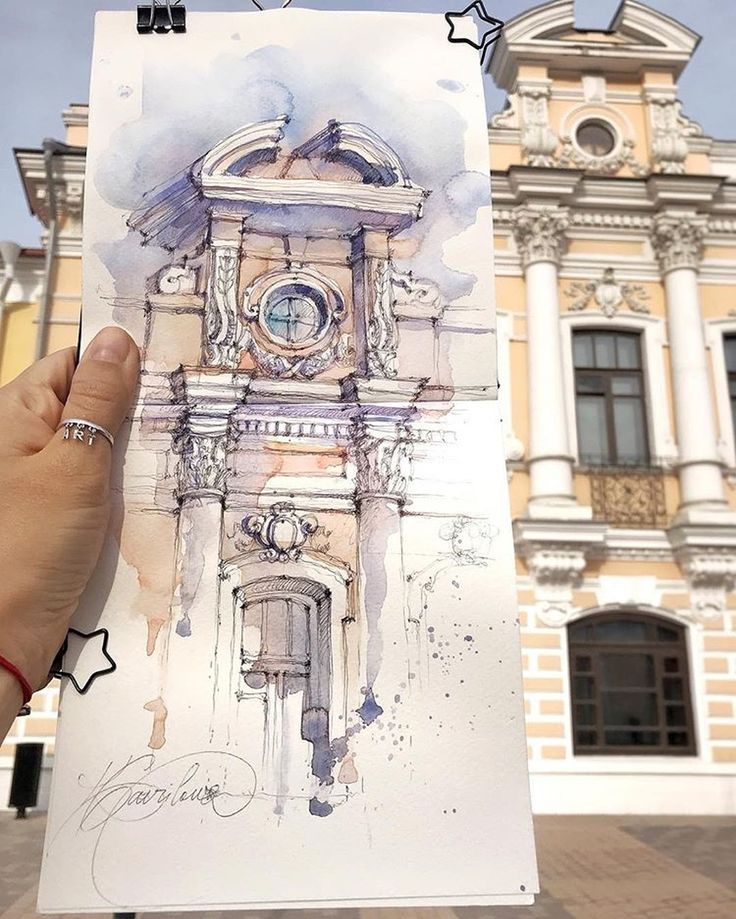
Urban sketching brings people together through a shared love of art and cities. Artists can connect with others, learn new techniques, and find inspiration by joining groups and events.
Joining Global and Local Sketching Groups
Urban Sketchers is a worldwide group for city artists. They have chapters in many cities. Joining is easy and free! Local art clubs often have sketching groups too. These smaller groups are great for making friends nearby.
Members share tips and favorite spots to draw. They post sketches online and chat about art. Some groups meet weekly to sketch together.
Social media helps connect sketchers globally. Facebook and Instagram have many urban sketching groups. Artists post their work and get feedback from others around the world.
Participating in Sketchwalks and Sketchcrawls
Sketchwalks are fun group outings. Artists meet up and wander the city together. They stop to draw interesting sights along the way. It’s a chance to see the city with fresh eyes!
Sketchcrawls are similar but cover more ground. The group moves to several locations in one day. They might sketch a park, then a busy street, then a quiet cafe.
These events welcome all skill levels. Beginners can learn from watching others. Experienced artists enjoy the social aspect. Everyone shares their sketches at the end.
Exhibiting Your Work
Showing off sketches is exciting! Many urban sketching groups hold exhibitions. These can be in galleries, cafes, or libraries. Some shows have themes like “City Life” or “Hidden Corners.”
Online exhibitions are popular too. Artists upload their best work to virtual galleries. This lets people from all over see the sketches.
Exhibiting builds confidence. It’s thrilling to see your art on display! Viewers often leave comments. This feedback helps artists grow and improve their skills.
Some exhibitions raise money for charity. Others celebrate a city’s history through sketches. It’s a great way to connect art with the community.
Narratives in Urban Sketching
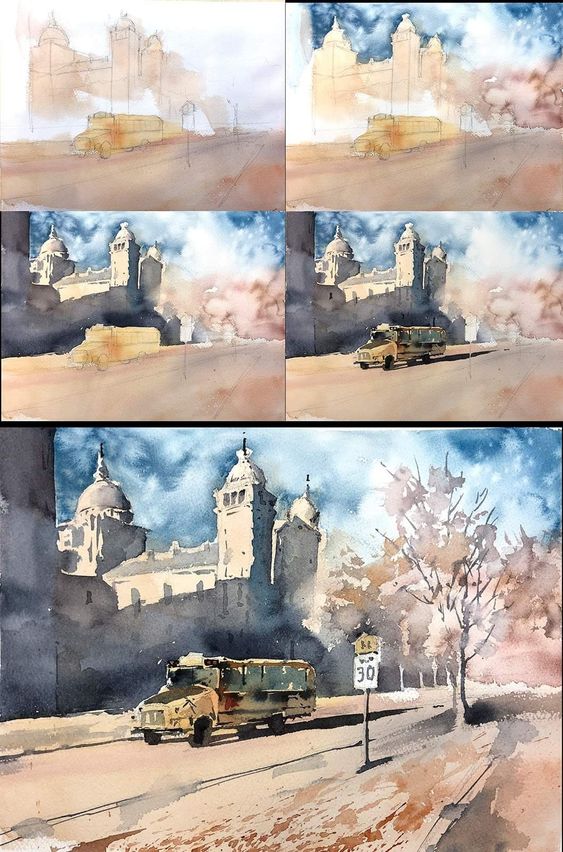
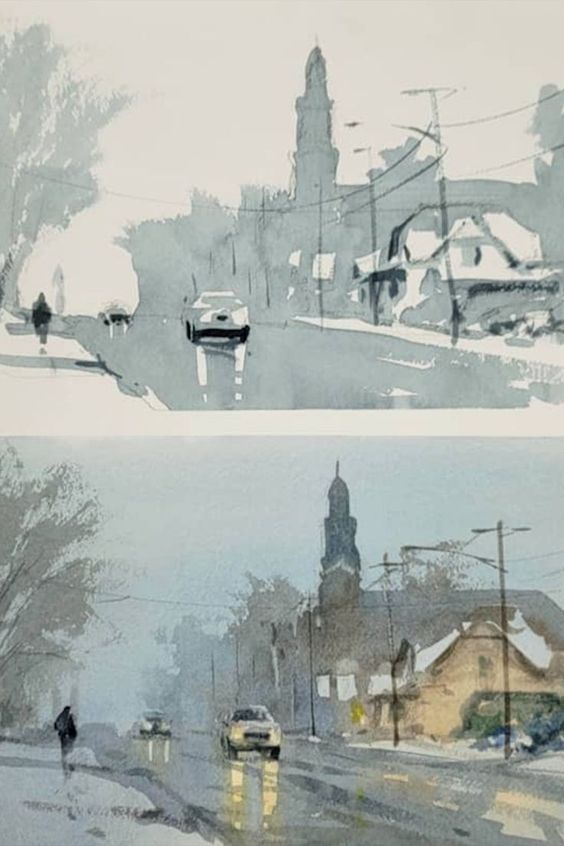
Urban sketching brings city scenes to life through art. Artists use their drawings to tell stories and capture the unique spirit of urban environments.
Storytelling Through Sketches
Sketches can tell amazing stories about city life! Artists use their drawings to show bustling streets, cozy cafes, and towering skyscrapers. They capture snippets of conversations and fleeting moments.
A simple sketch of a park bench might reveal a hidden love story. Or a drawing of a busy intersection could showcase the daily hustle and bustle of city dwellers.
Urban sketchers often add notes and captions to their work. These little details help bring the scene to life even more. They share the sights, sounds, and feelings of being in that exact spot.
Capturing the Spirit of the Urban Scene
Urban sketchers aim to bottle up the energy of a city in their art. They focus on what makes each place special and unique.
A sketch of New York might highlight yellow taxis and hot dog stands. While a drawing of Paris could feature charming cafes and the Eiffel Tower.
Artists use different techniques to show the mood of a place. Quick, loose lines might convey a busy street corner. Softer, more detailed work could capture a quiet moment in a hidden alleyway.
Color choices also play a big role. Bright, bold hues can show the excitement of a city festival. Muted tones might depict a foggy morning by the harbor.
Educational Resources
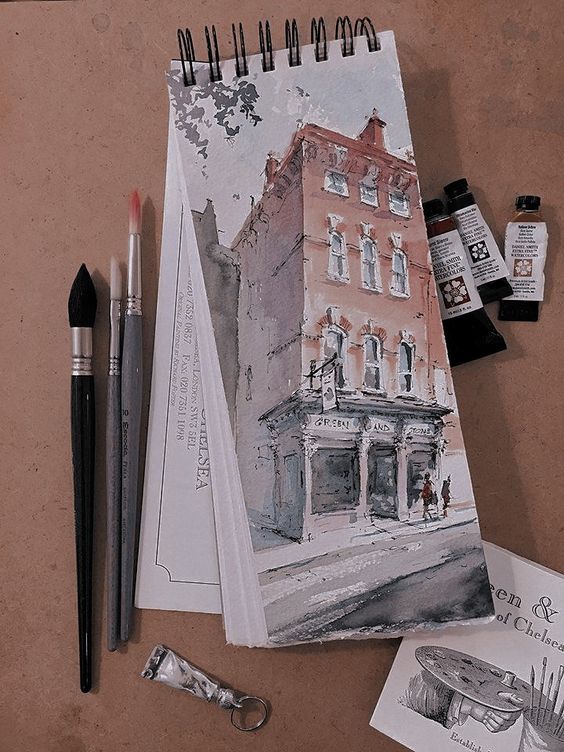
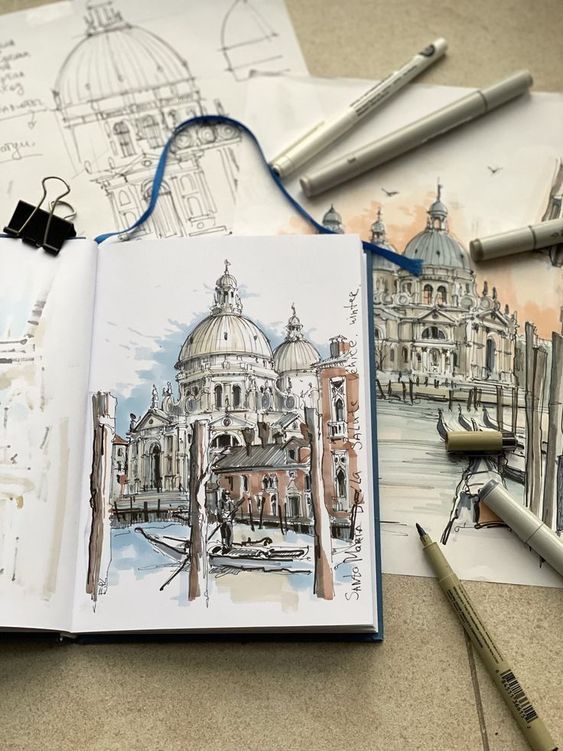
Urban sketchers have many ways to learn and grow their skills. Classes, books, and online groups help artists improve their craft.
Workshops and Online Learning
Urban sketching courses bring artists together to learn new techniques. In-person workshops let students draw with expert teachers in exciting locations. Online classes make learning flexible and accessible from anywhere. Many groups offer both options. Students can join live video sessions or watch recorded lessons. Some popular courses focus on topics like perspective, watercolor, or quick sketches.
Books and Free Courses for Beginners
New urban sketchers can start with helpful books and free online resources. Many skilled artists have written guides full of tips and examples. These books often include step-by-step exercises to practice. Free urban sketch courses are also available online. They cover basics like choosing supplies and finding interesting subjects. Video tutorials show different drawing methods in action.
Feedback Gallery for Improving Techniques
Sharing work is key to getting better at urban sketching. Online feedback galleries let artists post their sketches and get comments. Other sketchers give tips and encouragement. This helps everyone learn from each other’s ideas and styles. Some groups have weekly themes to inspire new drawings. Artists can also join local meetups to sketch and chat in person.
Special Events and Collaborative Projects
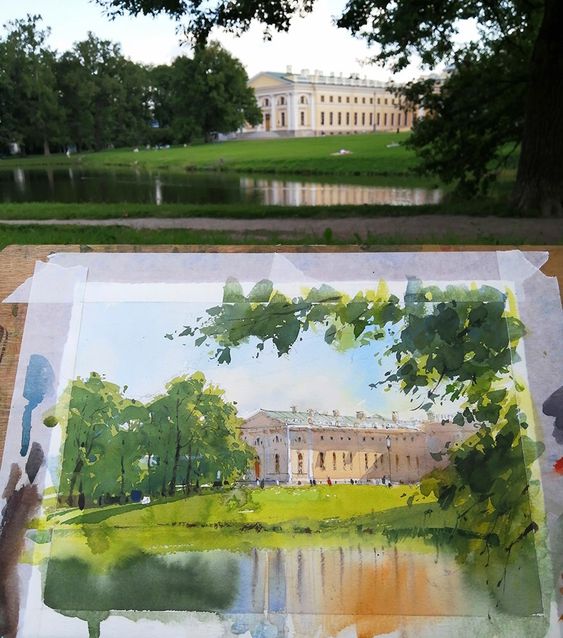
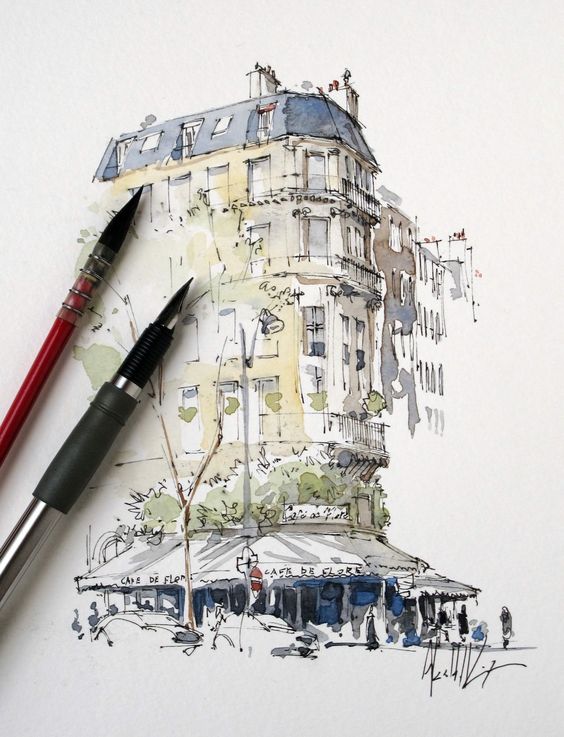
Urban sketchers love to come together for exciting events and joint projects. These gatherings spark new ideas and friendships among artists who share a passion for drawing on location.
International Urban Sketchers Symposium
The International Urban Sketchers Symposium is a big yearly event. Artists from all over the world meet up in a different city each time. They spend days sketching together and learning new skills.
The symposium has fun workshops led by expert sketchers. Participants try out different drawing styles and materials. They also go on guided sketching tours around the host city.
In the evenings, artists share their work and swap stories. Many form lasting friendships with fellow sketchers from other countries. The energy is amazing as hundreds of artists fill their sketchbooks with views of the city.
Regional Sketching Retreats
Smaller regional retreats happen throughout the year. These cozy gatherings let local sketchers spend a weekend drawing together. They often take place in scenic small towns or natural settings.
Artists stay in shared lodging and sketch from sunrise to sunset. They might draw old buildings, busy marketplaces, or lovely landscapes. Meals become social events where everyone shares their day’s work.
These retreats help build tight-knit sketching communities. Beginners get tips from more experienced artists in a relaxed setting. Many leave feeling inspired and ready to draw more in their daily lives.
Collaborative Art Initiatives
Urban sketchers team up for fun group projects too. One popular idea is the “drink and draw” meetup at local cafes. Artists gather to sketch and chat over coffee or tea.
Some groups create collective sketchbooks. Each person adds a drawing, then passes it to the next artist. The final book becomes a unique record of their shared experiences.
Other projects involve public art. Sketchers might work together on a big mural based on their city drawings. Or they could create a display of urban sketches for a local gallery or library.
These team efforts boost creativity and build strong art communities. They also help spread the joy of urban sketching to new audiences.
Tips and Techniques for Progression
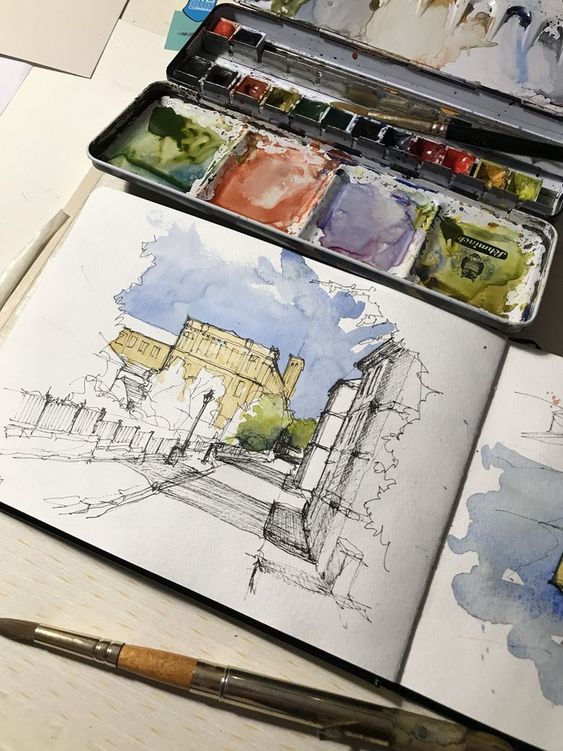
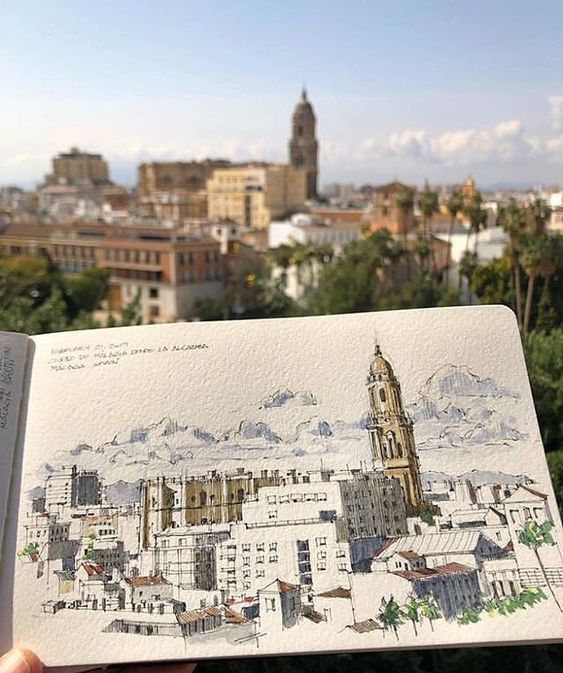
Urban sketching is an exciting journey of growth and discovery. Let’s explore some key ways to take your skills to the next level!
Improving Your Tonal Values
Tonal values are super important in urban sketching. They add depth and life to your drawings. Try squinting at your subject to see the light and dark areas more clearly. This trick helps simplify complex scenes.
Practice using a value scale in your sketchbook. Start with light pencil marks and build up to darker tones. Don’t be afraid to go really dark in some areas!
Experiment with different pencil grades. Soft pencils (like 6B) are great for deep shadows, while harder pencils (like 2H) work well for lighter areas.
Advanced Tips from Renowned Artists
Ian Fennelly, a famous urban sketcher, loves using bold colors and loose lines. He suggests starting with a light pencil sketch, then adding ink and watercolor.
Many artists recommend carrying a small set of watercolors with you. They’re perfect for adding quick splashes of color to your sketches.
Try sketching the same scene at different times of day. Notice how the light changes and affects the mood of your drawing. It’s a fun way to challenge yourself!
Wild West Sketching Challenges
The Wild West Sketching Course is a fun way to push your skills. It encourages artists to draw quickly and capture the essence of a scene.
One challenge is the “5-minute sketch.” Set a timer and try to capture as much as you can in just 5 minutes. It’s tough, but it helps you focus on the most important parts of a scene.
Another exciting challenge is “blind contour drawing.” Draw your subject without looking at your paper. It might look funny, but it really improves your observation skills!
- 612shares
- Facebook0
- Pinterest609
- Twitter3
- Reddit0
